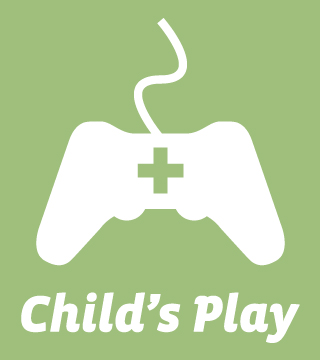 Many of you may be familiar with the Child’s Play charity that was started by the guys behind the video game webcomic Penny Arcade. Since 2003, the organization has encouraged gamers to donate new video games (or cash or other toys) to children’s hospitals around the world so that little Timmy can distract himself from chemotherapy by teabagging some poor son of a bitch in Call of Duty. Coming from two guys who make a running gag out of a robot that sexually molests fruit and an industry that’s often under scrutiny for too much violence, sex, and teabagging some poor son of a bitch in Call of Duty, this is a refreshingly noble endeavor.
Many of you may be familiar with the Child’s Play charity that was started by the guys behind the video game webcomic Penny Arcade. Since 2003, the organization has encouraged gamers to donate new video games (or cash or other toys) to children’s hospitals around the world so that little Timmy can distract himself from chemotherapy by teabagging some poor son of a bitch in Call of Duty. Coming from two guys who make a running gag out of a robot that sexually molests fruit and an industry that’s often under scrutiny for too much violence, sex, and teabagging some poor son of a bitch in Call of Duty, this is a refreshingly noble endeavor.
Now, while we’re at it, also consider the earthquakes and tsunami that severely messed up parts of Japan in early 2011. It was interesting to watch the gamer community’s reaction to this tragedy since Japan is frequently associated with the gaming industry. As one example, fans of fighting games organized the Fight For Relief tournament to raise earthquake relief donations. While philanthropy thankfully pops up after any high-profile natural disaster, I found it fascinating that the Japan earthquake created so much energy in the gamer community and to see people participating because they consider themselves gamers. I don’t recall listening to gaming podcasts and hearing about special video game charity tournaments after the 2010 earthquakes in Haiti, for example.
Why is that? What are the psychological reasons why gamers jump behind these causes? To be sure, Child’s Play and the Japan earthquake relief funds thrive because enough people just want to do good deeds. Sure. That’s a given. But are there other factors involved that make gamers like you or me more likely to support these particular charities over others? I think so.
Research into the psychology of charity has argued for a “warm glow giving” theory at least since the mid 80s 1 Unsurprisingly altruism not a purely rational decision nor is it born only of some strict adherence to a moral code. We donate, in part, to feel better about ourselves. Shocking! But one thing that subsequent social psychologists and economists have found is that we tend to donate more when we believe that the charity or our fellow contributors share a similar social identity. That is, if we think that other people in our in-group are donating, we’re more likely to support, contribute to, and trumpet the charity because it makes us feel better about our social identity and thus ourselves.
As an example, one recent experiment from the Journal of Marketing Research 2 researchers found that they could get people to give more money to a public radio fundraiser by telling them that a previous donor had donated a phat wad of cash, but ESPECIALLY if that previous donor was described in terms that made him/her sound similar to the subject. This was most pronounced in those people with “high identity esteem,” which is basically a measure of how strongly people associate with their social group. Another experiment 3 got subjects to prefer a promotion in the form of “a portion of our proceeds will benefit charity” over a more rational cash discount for the same amount, just by choosing a charity that the shopper identified with. 4
But wait, there’s more. Research has also shown that we may donate more to charity when we feel bad about ourselves, as a way to repair our self image. This was illustrated in a series of experiments 5 where subjects were tricked into writing essays about their own character that were either positive or negative. Those that beat themselves up by writing self-critical essays gave more when they were subsequently asked to give to a charity of their choice.

Sad Panda will donate more to your cause than will Happy Panda. This is because of sad panda science.
I know this may be a leeetle bit cynical, but I have to wonder if there’s something at work here with Child’s Play and similar charities that target gamers. We often get criticized for loving a hobby replete with violence, sexism, and whatever it was that “B4dKillahD00d43” was screaming at me over Xbox Live the other night. Making a success of Child’s Play gives us a chance to refute those stereotypes and show that gamers can be good people. The Child’s Play website itself even notes that “In response to the media’s negative portrayal of gamers, [Holkins and Krahulik] called for the gaming community to donate to Seattle Children’s Hospital” during the charity’s inaugural season. And why not? Whether or not the stereotypes are accurate, this kind of moral cleansing makes us happier and mentally healthier to the extent that we consider ourselves gamers.
So, I encourage you to go and donate to Child’s Play this season –I just did prior to posting this article. 6 Sure, little Timmy can be kind of annoying over voice chat when the nurse isn’t around, but let’s cut him some slack. The kid has been through a lot lately and we can help him out.



These charity actions however, always let me think about if it wouldn’t be better to put the energy into more important actions first. But then, I feel myself caught by the usual prejudices (although being a gamer myself) and remind myself: videogaming can be a better distraction than anything else, and distraction (I believe I read something about that some time ago) can even make your wounds feel less horrible (be it physical or psychological pain). So, good idea!
How did I never noticed this blog hanging around the internet before? Dude, you’re great! Great article(s)!
Great article and cool pix. I especially like that you include referencing.
I am not a gamer but used Half Life to have an environment created for my 4th year thesis to sue virtual reality in an indoor navigation experiment. Recently, have come across gamification theory and colleague and I are collaborating on ways to ground interactive PsychEd! materials created for students,
Will visit often ~:-)
Pingback: Anonymous